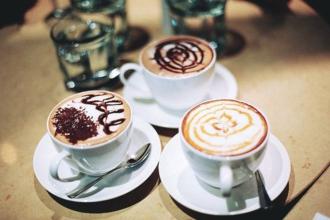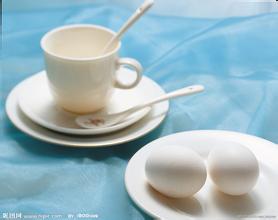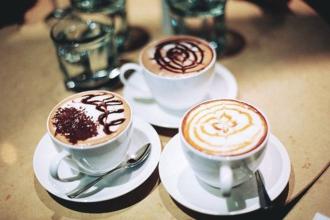Description of Blue Mountain Coffee Flavor characteristics of Grinding degree introduction of Fine Coffee beans in producing areas
In 1717, King Louis XV of France ordered coffee to be grown in Jamaica. In the mid-1920s, Nicholas, governor of Jamaica, ordered coffee to be grown in Jamaica. Nicholas Lawes imported Arabica seeds from Martinique and began planting them in St. Andrew. To this day, St. Andrew's is one of the top three growing regions for Blue Mountain coffee in Jamaica, along with Portland and St. Thomas. Within eight years, Jamaica exported more than 375 tons of pure coffee. Coffee production peaked in 1932, harvesting more than 15000 tons of coffee.
The Jamaica Coffee Industry Board was established by the Government of Jamaica in 1950 to establish quality standards for Jamaica coffee and oversee the implementation of quality standards to ensure the quality of Jamaica coffee. The Commission awards a special official seal to Jamaica's exports of green and roasted coffee and is the world's highest national coffee authority. At present, Mavis Bank Coffee Factory (M.B.C. F), Blue Mountain Coffee Cooperative Factory (M.H.C.C.T.), Portland Blue Mountain Coffee Cooperative Plant (P.X.X.S.H.), Coffee Industry Association (Wallenford), Coffee Industry Association (St. John's Peak) and Blue (J.A.S.) 6 kinds of logo.
By 1969, the situation had improved, as Japanese loans had improved the quality of production and thus secured the market. By now, the coffee has reached the point of being fanatically loved.
By 1981, about 1500 hectares of land in Jamaica had been cleared for coffee, followed by another 6000 hectares. In fact, today's Blue Mountain region is a small area of only 6000 hectares, and it is impossible that all the coffee labeled "Blue Mountain" is grown there. Another 12000 hectares are devoted to growing two other types of coffee: alpine premium coffee and Jamaica premium coffee.
geographical advantages
Blue Mountain Coffee is the world's premier coffee, and Jamaica's weather, geology and terrain combine to provide the ideal location. Ridges running through Jamaica extend to the east of the island, and the Blue Mountains rise to more than 2100 meters. The weather is cool, foggy and frequent, so use this rich soil to reconcile rain. Here, coffee trees are grown in a mixed cropping system, alongside banana and avocado trees on terraces. Some small farms are also planted. But even the region's largest planters are small-scale farmers by international standards, many of them smallholders whose families have been working for two centuries. The coffee industry in Jamaica faces a number of problems, such as the impact of hurricanes, increased labour costs and difficulties in mechanising terraces. Many small estates and farms are difficult to rationalize.
Since Japan has always invested in Jamaica coffee industry, most of the Blue Mountain coffee is now controlled by the Japanese, and they have also obtained the right of first refusal to buy Blue Mountain coffee. In 1992, Jamaica sold 688 tons of Blue Mountain coffee to Japan, 75 tons to the United States and 59 tons to Britain. 90% of Blue Mountain coffee is now purchased by Japanese. Blue Mountain coffee is now in short supply, regardless of price, since the rest of the world can only get 10 percent of Blue Mountain coffee.
classification
There are three varieties of coffee in Jamaica: Jamaica Blue Mountain Coffee, Jamaica High Mountain Supreme Coffee Beans and Jamaica Prime Coffee Beans. Among them, Blue Mountain Coffee and Alpine Coffee are divided into four grades. From the top to the bottom of the quality points are: NO.1, NO.2, NO.3 and PB, PB is round beans. According to CIB standards, only coffee grown above 666 meters above sea level is called Jamaica Blue Mountain Coffee; coffee grown below 666 meters in the Blue Mountains of Jamaica is called Alpine Coffee; coffee grown outside the Blue Mountains is called Jamaica Coffee. It turns out that Chinese coffee industry generally has a wrong understanding that only coffee planted in the Blue Mountain area above 1800 meters above sea level can be called Blue Mountain Coffee. In fact, there is only one manor on the mountain crown above 1800 meters in the Blue Mountain Range, Amber, which is descended from Chinese people. The manor's main surname is Lyn(Lin), whose ancestral home is Guangdong, China. The manor has only 30 hectares of land and its yield is very small. Blue Mountain Coffee is mainly distributed in John Crow, St. John's Peak,Mossman's Peak,High Peak,Blue Mountian Peak and other five mountain areas in the Blue Mountains.

Important Notice :
前街咖啡 FrontStreet Coffee has moved to new addredd:
FrontStreet Coffee Address: 315,Donghua East Road,GuangZhou
Tel:020 38364473
- Prev

Panamanian Coffee Flavor description Grinding characteristics introduction to the taste of high-quality coffee beans in producing areas
Panama has been among the world's best coffee producers since three years ago, surprising countries that have been in the vanguard of developer production for many years. Panamanian coffee is mainly produced in the west near the Costa Rican border, producing the best washed coffee. Compared with coffee beans grown at low and middle elevations, the low temperature and stable climate in the high elevations of Panama
- Next

Tastes, aromas, a lot of Tanzanian coffee, grind, characteristics, varieties, producing areas, fine coffee introduction
Kilimanjaro coffee is mainly suitable for blending, you can make your own blend or make a variety of fancy coffee. Brewing: To brew a good cup of coffee, in addition to fresh coffee powder and slightly harder water, there must be a handy brewing tool. There are three main types of coffee brewing machines commonly used. Drip filter: wet coffee powder with water, let
Related
- Detailed explanation of Jadeite planting Land in Panamanian Jadeite Manor introduction to the grading system of Jadeite competitive bidding, Red bid, Green bid and Rose Summer
- Story of Coffee planting in Brenka region of Costa Rica Stonehenge Manor anaerobic heavy honey treatment of flavor mouth
- What's on the barrel of Blue Mountain Coffee beans?
- Can American coffee also pull flowers? How to use hot American style to pull out a good-looking pattern?
- Can you make a cold extract with coffee beans? What is the right proportion for cold-extracted coffee formula?
- Indonesian PWN Gold Mandrine Coffee Origin Features Flavor How to Chong? Mandolin coffee is American.
- A brief introduction to the flavor characteristics of Brazilian yellow bourbon coffee beans
- What is the effect of different water quality on the flavor of cold-extracted coffee? What kind of water is best for brewing coffee?
- Why do you think of Rose Summer whenever you mention Panamanian coffee?
- Introduction to the characteristics of authentic blue mountain coffee bean producing areas? What is the CIB Coffee Authority in Jamaica?

